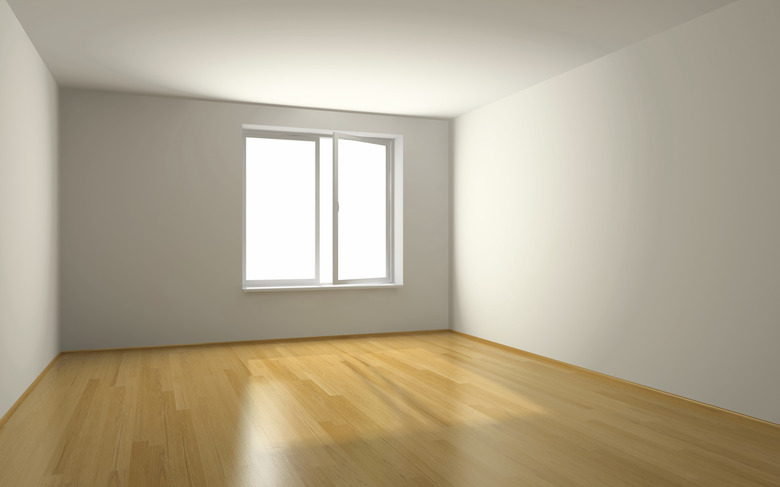Reasons Ceilings Separate From Walls
Cracks developing in the drywall between the top of the wall and the ceiling can look troubling, but they don't necessarily signify major structural problems. More often than not, the cracks develop because of the movement of wood in the framing in response to moisture. In some cases, though, the cracks may signify foundation settling. When that's the case, they are usually accompanied by cracks in other parts of the walls and ceilings.
Truss Uplift
Truss Uplift
The trusses in a typical house consist of horizontal ceiling joists — the lower chords of the trusses — and diagonal roof supports — the upper chords. The space in between is the attic, and most homeowners insulate this space by spreading material on the lower chords of the trusses. This keeps them dry while condensation soaks into the upper chords, causing them to expand. If the trusses are nailed to the wall plates, the resulting distention at the points where the upper and lower chords meet can separate the ceiling from the walls.
Truss Clips Prevent Cracks
Truss Clips Prevent Cracks
Builders can prevent truss uplift during the framing phase of house construction by refraining from nailing the trusses to the wall plates. Instead, they attach them with L-shaped truss clips that allow the trusses and walls to move independently. It's still possible to install these clips after the walls and ceiling have been drywalled. You must first pull out all the nails holding the trusses to the wall plates. You then nail the clips to the wall plates. The upper sections of the clips have slots instead of holes, and when you drive a nail — leaving the head out by 1/4 inch or so — the clips can slide up and down.
More Truss Uplift Remedies
More Truss Uplift Remedies
The drywall on the ceiling and walls won't move with the trusses if you remove the ceiling fasteners within 16 inches and the wall fasteners within 8 inches of the corners. If the drywall is nailed, use a nail set to pound the heads through the drywall, and if it's screwed, remove the screws with a drill and screw bit. Fill the holes with joint compound and repaint. Another solution is to install crown molding to hide the cracks, being sure to nail it only to the ceiling. Do this in winter, when the distention is at a maximum, to avoid seeing telltale lines.
Others Reasons Walls Separate
Others Reasons Walls Separate
Cracks between a wall and the ceiling can develop for reasons other than truss uplift. A nearby appliance that vibrates, such as a window air conditioner, can make the wall move and cause the cracking. Cracks can also develop when the foundation settles. A certain amount of settling over the years is normal, but gaps that appear suddenly could signify rot in the foundation members or a problem with the soil around your house. The effects of foundation settling are usually noticeable throughout the house. The floors may slope, walls around doors and windows may crack and doors and windows may become difficult to open or close.
